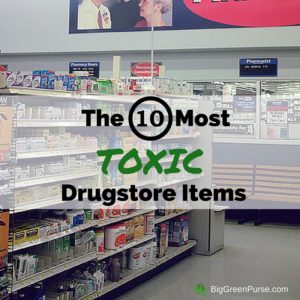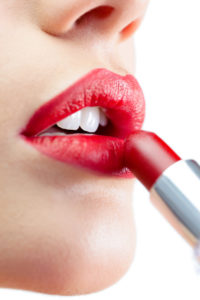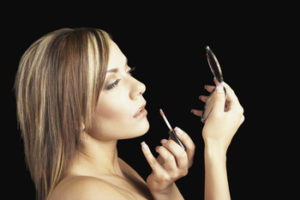
We’ve gotten it out of paint and gasoline because of its links to birth defects and mental retardation. Says Health Canada, “Exposure to lead may have subtle effects on the intellectual development of infants and children. Infants and toddlers are particularly vulnerable to the harmful effects of lead because they are undergoing a period of rapid development; furthermore, their growing bodies absorb lead more easily and excrete lead less efficiently than adults. In addition, infants and young children are more likely to ingest lead because of their natural habit of putting objects into their mouths.
“Once in the body, lead circulates in the blood and either builds up in bone or is eliminated from the body, mostly in urine. Lead can stay in the body for over 30 years following exposure.”
So the message should be: don’t use lead, and especially don’t eat it.
Yet updated research from the U.S. Food and Drug Administration has found noticeable amounts of lead in over 400 brands of lipstick, including Revlon, Clinique, L’Oreal, Maybelline, Cover Girl, and Estee Lauder. FDA says that it is not concerned because lipstick is a “topical” product that is not intended to be “ingested.” In other words, the agency is acting as if lipstick stays on lips.
But if you wear lipstick, you know that’s not true. We lick our lips all day long, which means that we’re eating lipstick all day long, and applying it all day long, too.
Besides, says Mark Mitchell, M.D., MPH, the policy advisor of the Connecticut Coalition for Environmental Justice and co-chair of the Environmental Health Task Force for the National Medical Association, lead “builds up in the body over time and lead-containing lipstick applied several times a day, every day, can add up to significant exposure levels.”
In January, reports Forbes, an advisory committee to the U.S. Centers for Disease Control and Prevention declared there is no safe level of lead for children and stressed the importance of preventing lead exposure for kids and pregnant women. While lipstick is not sold to children, if you’re a mother, aunt, grandmother, or babysitter, you know how hard it can be to keep kids away from make-up, especially lipstick.
To be clear, the cosmetics companies are not intentionally adding lead to their product forumulations. But because lead is so prevalent in air, water, and minerals, it can appear as a trace contaminant in the raw ingredients companies use in manufacturing.
If you want to buy lipstick, here are 11 brands that tested lead-free in 2007. Note that many are made by companies you’ll recognize, like Avon, and are very affordable.
















2 thoughts on “Lead-Free Lipstick? Well…duh!”
Lead in lipsticks and aluminum in deodorants cause cancer, they say, and believe me I have had my share of that. Any information on this would help. Thanks.
I agree that we shouldn’t mindlessly consume lead but I think it’s also common sense to realize exactly how much of a risk lead in lipstick is compared to other things we eat much more of like water or salad dressing, for example. I personally researched this topic for well over one month and discovered 8 HUGE misconceptions about lead in lipstick. The media isn’t telling us the whole (honest) story:
http://figandsage.blogspot.com/2012/03/soapbox-is-there-more-lead-in-my.html
Comments are closed.